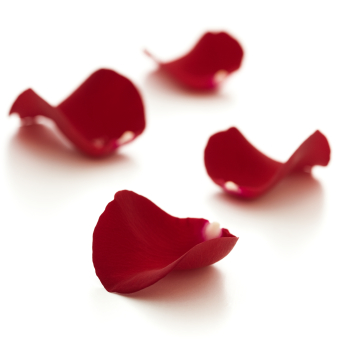Let me be completely transparent: I have a very special “thing” for willow.
In spite of the fact that we live in the dry, high desert plains of New Mexico (a place not known for being hospitable to thirsty trees), we have an enormous willow in the back yard.
Originally planted to celebrate our beloved Rhodesian Ridgeback, Sonora (who is buried not ten feet behind where it grows), our willow tree has since come to serve as a symbol of strength, vigor, love, and fidelity for my husband and me. We planted it together, nurtured it together, and were married beside it; our wedding rings were kept in a tiny bird’s nest among its branches until we put them on each other’s fingers. That day, just a little over four years ago, the tree was only a wee bit taller than us.
Today, “our” willow soars and sways at 25 feet tall. She dominates the back yard and waves her branches in welcome to guests from well down the lane. With every good rain, she stands noticeably taller. Our willow is a huge, lush, green tribute on a horizon that can otherwise be quite brown and bleak.
Willow’s associations are rich and many, as are the varieties of willow that grow around the world.
There are at least 500 species of Willow–from enormous trees with expansive canopies to tiny Arctic plants barely two inches tall. Our Willow is a weeping willow (Salix babylonica) tree. (Notably, the root of Willow’s name reveals a lot about her nature: ‘sal’ – meaning near, and “lis” – meaning water.)

Her flexible boughs suggest adaptability and the ability to withstand great hardships by bending–but not breaking–in the wind.
Willow–and the weeping willow in particular–is also aligned with death and mourning as her heavy branches languish as though exhausted by sadness, hanging from her crown to the ground.
Though she can appear heavy-hearted to the eye, her glorious shape–like a fountain or wellspring–speaks of resilience, energy from deep within, and safe cover from harm as her branches sweep away tears of grief, restore courage, and deliver strength to those friends who seek solace under her canopy.
The Seneca called Willow “the Whispering One” and believed the hushed voice of her branches in the wind were messages to Great Spirit.
While it’s said Willow is sacred to Osiris as it shrouded and hid his coffin, most will agree that Willow is distinctly aligned and anchored in the divine feminine. Willow is especially sacred to Hecate, the witch’s witch, who assured her followers that spells could be bound with strips of Willow’s bark and promises could be tied in Willow’s flexible branches.
Considered the Queen of Trees, Willow is associated with inspiration, the moon, witches, healers, faery folk, and Spring, as well as death, mourning, and immortality.
Mourners of days past often wore Willow sprigs to signify their heartbreak and warn approaching individuals of their fragile state. Carried, Willow wood is said to deliver agility, courage, and strength to overcome the fear of death for the bearer. Willow planted near a home is said to secure and safeguard the home from danger, particularly weather-associated mishaps. A knock upon the trunk of the tree dispels evil; a bough placed in the home protects against both evil spirits and evil spells.

Herbalists, crafters, and magical initiates use Willow’s bark, sap, twigs, branches, and wood. Thanks to healers and wise women, pharmaceutical companies eventually grew curious about Willow’s use in healing; they found salicylic acid, better known as the active ingredient in aspirin, in Willow’s genus, Salix. (Interestingly, most salicylic acid is now sourced from Meadowsweet.)
Wise women and healers had of course already been using Willow to alleviate pain, reduce fever, relieve rheumatic conditions, and wash burns, wounds, and skin issues for centuries.
Anti-inflammatory, analgesic, antiseptic, and tonic, Willow has been included in everything from eye washes to dandruff treatments. Her healing properties are so vast and ancient, she has been called a Healing Tree for thousands of years.
Herbalists interested in using Willow in their own practice would be wise to collect the bark, twigs, and leaves in the Spring–and (as always) only after asking permission and offering a gift. Taken straight from even a mature tree, there is some risk of harming the fragile trunk if bark is harvested carelessly–best not to risk it if you have any doubt about what you’re doing! Thankfully, Willow is quite generous in abandoning twigs and branches (also known as “falls”) after a storm. These falls can be gratefully gathered up, bound together with brightly colored ribbon, and placed over a threshold or door to protect the home. (Be sure to thank Willow for her generosity, even with the falls!) While all willows contain healing properties, most herbalists actually work with White Willow. Willow bark, which can easily be peeled off of the falls, is particularly effective in herbal oils, tinctures, and poultices, but is best used by an experienced herbalist.
Thanks to its overwhelmingly positive associations, Willow is particularly well indicated in white magick.
She supports any spells that improve human condition and “harm none”, particularly enchantments, healing, protection, fertility, and peace spells. The long, flexible branches are typically used in basketry and weaving; shorter, thicker branches make beautiful wands. Simply peel off the bark, thoughtfully carve or engrave any desired image or message, and polish/oil the wand with either linseed or cottonseed oil until it has cured to your liking. It is recommended you eventually wrap the wand’s handle with a natural cloth (or even leather, if you are so inclined) to protect it from exposure when you are not using it to raise positive energy in the world.
Bless and blessed be!








